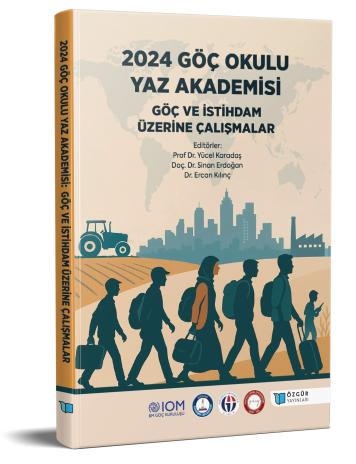
An Evaluation of the Right to Work of Persons Under Temporary and International Protection
Chapter from the book:
Karadaş,
Y.
&
Erdoğan,
S.
&
Kılınç,
E.
(eds.)
2025.
2024 Migration School Summer Academy -Studies on Migration and Employment.
Synopsis
Throughout history, the geography in which Turkey is located has witnessed many wars due to its location, and after these wars, people have left their regions and created migration movements. In recent years, the Republic of Turkey has been endeavouring both to meet asylum requests and to prevent irregular migration movements due to the ongoing war in Syria since 2011 and the mass migration wave due to this situation, as well as its position as a country of destination and transit country for many people coming from various geographies such as Iraq, Iran, Afghanistan, African countries. In particular, the rights and obligations of asylum seekers from these various geographies under the Law No. 6458 on Foreigners and International Protection (LFIP) and the related legislation are basically evaluated under two different protection statuses, namely temporary and international protection. It is also possible for these persons to legally participate in the labour market and be employed if they meet the conditions stipulated in the Law on Foreigners under Temporary and International Protection (YUKK) and the various regulations developed under this law, as well as the International Labour Force Law No. 6735 (UİGK) and the legislation developed under this law. However, benefiting from the right to work, which is recognised in the Constitution as both a right and a duty for everyone, including foreigners, is subject to different procedures and processes for foreigners under temporary and international protection, including work permits. In this context, the study will firstly focus on the scope and limitations of the right to work for these foreigners in line with the regulations in the legislation. These scope and limitations have been analysed by examining the regulations in the legislation and the studies in the literature, and as a result of the analysis, some inadequacies and gaps created by the legal regulations have been identified. The aim of this study is to provide solutions to the problems caused by the inadequacies and gaps identified in the legal regulations reflected in practice.

